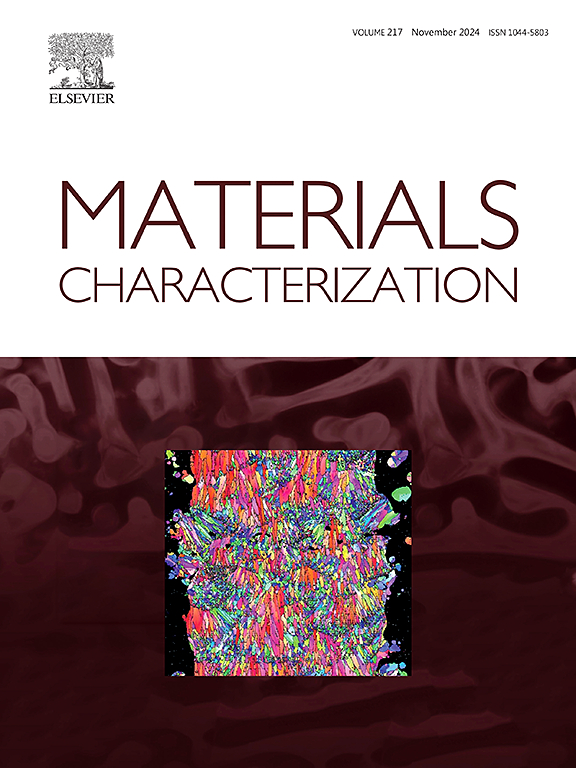The effect of heat treatment on the microstructure and mechanical properties of 6082 aluminum alloy manufactured by friction stir additive
IF 4.8
2区 材料科学
Q1 MATERIALS SCIENCE, CHARACTERIZATION & TESTING
引用次数: 0
Abstract
The Friction Stir Additive Manufacturing (FSAM) technique was employed to successfully fabricate multi-layered components of 6082-T6 aluminum alloy in this study. This study investigated the influence of heat treatment on the microstructure and mechanical properties of the additively manufactured 6082-T6 aluminum alloy parts. The results indicate that due to continuous dynamic recrystallization (CDRX), AZ exhibits a fine equiaxed grain structure. Compared to BM, the proportion of low angle boundaries (LABs) and the density of geometrically necessary dislocations (GND) decrease in the AZ samples. Subsequent to heat treatment, the HTAZ grains undergo static recrystallization (SRX) and exhibit abnormal growth, leading to a further reduction in LABs proportion and GND density. Following FSAM, the disappearance of the β” phase in AZ samples results in microhardness and tensile strength reaching 62.82 % and 64.46 % of BM, respectively. Variations in thermal cycling across different locations in AZ lead to heterogeneous mechanical properties. Post-heat treatment, the re-precipitation of high-density β” phases led to a 56.21 % strength recovery in HTAZ samples. Most importantly, the significant improvement and resolution of the mechanical property non-uniformity issue in the additive region were achieved.
求助全文
约1分钟内获得全文
求助全文
来源期刊

Materials Characterization
工程技术-材料科学:表征与测试
CiteScore
7.60
自引率
8.50%
发文量
746
审稿时长
36 days
期刊介绍:
Materials Characterization features original articles and state-of-the-art reviews on theoretical and practical aspects of the structure and behaviour of materials.
The Journal focuses on all characterization techniques, including all forms of microscopy (light, electron, acoustic, etc.,) and analysis (especially microanalysis and surface analytical techniques). Developments in both this wide range of techniques and their application to the quantification of the microstructure of materials are essential facets of the Journal.
The Journal provides the Materials Scientist/Engineer with up-to-date information on many types of materials with an underlying theme of explaining the behavior of materials using novel approaches. Materials covered by the journal include:
Metals & Alloys
Ceramics
Nanomaterials
Biomedical materials
Optical materials
Composites
Natural Materials.
 求助内容:
求助内容: 应助结果提醒方式:
应助结果提醒方式:


